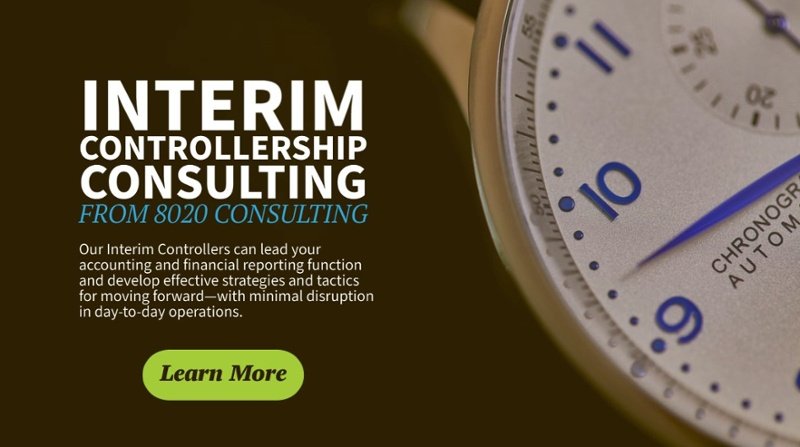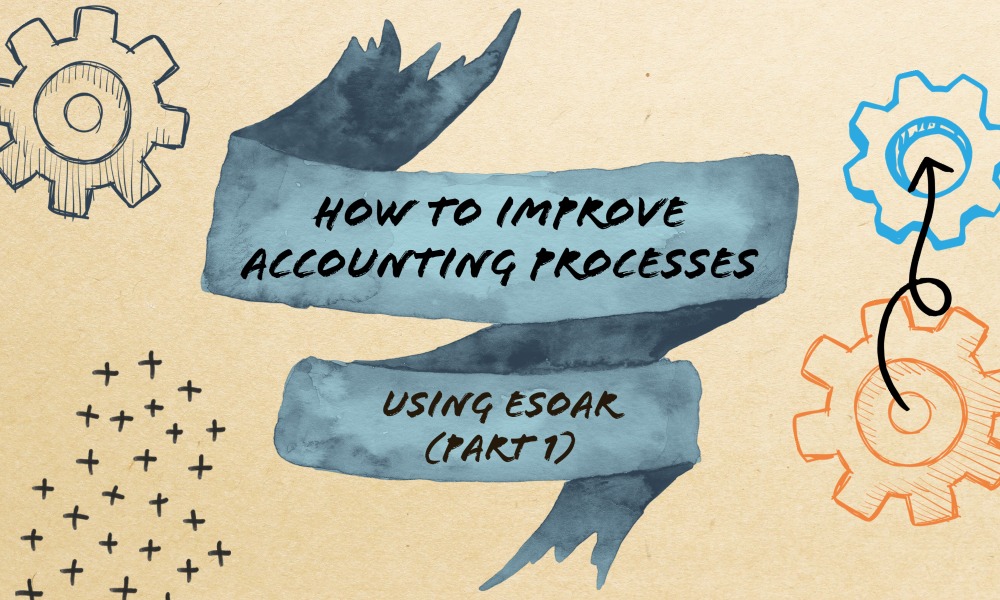A finance/accounting Consultant generally has two areas under which any particular project falls:
- Project Execution, in which they have specific scope with a finite timeframe, or
- Interim Consulting, in which the Consultant has to to temporarily backfill an existing position until someone else is hired.
For the latter case, sometimes the backfill is for more than one role. In the extreme, it’s doing the work that would normally go to an entire team. This article will explore a project in that extreme scenario, in which two scrappy, underdog Interim Consulting professionals and their Client (a VP in finance in the entertainment industry) transitioned an entire team from the ground up and the lessons learned from that experience.
Starting from Scratch
The Japanese define kaizen as a process of continuous improvement. Forward-thinking leaders of companies are always trying to do kaizen in some form, whether it’s a tweak to the budget here or a strategic pivot there. In the last few years of the pandemic, many companies have been forced to make quick adjustments to survive the uncertainty, our Client included. In our case, the Client had started the process of transitioning an offshore team in London to their HQ in Los Angeles. (Many of the employees were unable or unwilling to make the move.) Our Client needed Interim Consulting support to quickly learn all the roles within the London team, document all the processes, take over the roles and train new team members as they were hired in Los Angeles… in two months.
No pressure.
Bucketing the List
Fortunately, the team in London was supportive. The outgoing VP on the London team had made a list of about 80-90 tasks his team was currently undertaking. We sat through a few meetings with him to put these tasks into several different buckets (e.g., by subject area, cadence or role). We also received a very handy crib sheet of where all the files were located on the shared drive, as well as which tasks impacted other tasks.
At the same time, we took meetings with all of the London team members in which they would generally go over what their roles were. In some cases, we went into depth on some of the more critical tasks. By the time we had finished the process of bucketing, our team of three became a team of four, as a director within the same company had transitioned to our team. At that point, we made one last category: who on the Los Angeles side would be linked up with an individual member of the London team to learn all their tasks.
The Interim Consulting Plan of Attack – Critical to Least
Our method was to learn as quickly as possible how to do the most mission-critical tasks first and waiting until later to cover the rest. Given the time-zone difference, this meant waking up at the crack of dawn in order to see some of these processes being done in real time. Later, we would practice doing the same tasks on our own to see if we could replicate what our London counterparts did.
21st Century Training via Videoconferencing & Learning the How
One comment that was made during the process was that in a normal, non-pandemic influenced time, the training would have been different. The Interim Consulting team and Client would likely have flown to London and spent a month or so in the office, working side-by-side with that team to quickly grasp all of their tasks. However, due to travel restrictions, quarantines and the fact no one was physically located at the London office anyway, we couldn’t pursue that option.
Instead, we heavily relied on the use of videoconferencing during the 2- to 3-hour blocks of time in the early morning (their afternoon) to ask as many questions as possible and then trying to do the same tasks later by ourselves. All of these videoconference sessions were recorded and stored on a shared drive organized by the aforementioned buckets for anyone on the team to view.
At this stage, simply learning how to do each task was a challenge. In a normal situation, you could pop by someone’s desk and ask them a quick question any time you got stuck. For us, we had to do as much as possible, write down a list of questions/issues, send off an email and wait a few hours or sometimes days for a response. Furthermore, a lot of the training was general walkthrough and not necessarily a live operation. Tasks were carefully timed, based on when other departments had finished making updates to their data. The database was built such that certain data were only made accessible for the London team during a short window of time. This aspect limited the Los Angeles team’s opportunity to learn.
Documentation via Screen Grabs
In some cases, the Consultants needed to start from scratch to create documentation for the processes, while in others, some brief instructions already existed. For the latter, we took the perspective of an outside hire that had no previous knowledge of our Client’s systems, templates and/or files. The documentation took the form of many different screen captures and colored arrows so the reader would know exactly what to do. In one notable instance, there was a 70-page document of instructions that needed to be updated for a process. Oof!
Interim Consulting Involves Taking the Wheel, Learning the Why & Updating
After a few iterations of meeting with the London team, asking questions on a process, and then asking follow-up questions after we created some documentation, we were now prepared to take the wheel and start operating live.
At this point, our team had grown from four staff members to six as a few senior financial analysts had been hired. The tasks we had were now broken up in teams of two or three, with some folks hopping around so that there was some cross-training. This was also done to figure out who would be concentrating on what set of tasks going forward based on their skill and comfort level.
In doing some of these tasks, we learned which processes could be improved and which could be eliminated. To make these assessments, it was important that we understood why a particular process was done in the way we were taught. Where we could, we improved upon processes to make them more efficient. However, we weren’t in a rush to improve everything immediately. For tasks that had a higher likelihood of breaking and causing a disruption, we waited until after the fiscal year to make changes.
Related Posts:
Training the New Team
While there are many ways to train new staff, we took a small teams’ approach to training the people who had recently joined. Before attending a specific training, new staff would need to review the step-by-step, colorful documentation with pictures that were produced by the Consultants. There were also many hours of recordings of our sessions with the London team that we asked newer members to look through, specifically watching distinct processes prior to their respective training sessions.
Most of the time, the training was done while performing the task live for an upcoming deliverable, as opposed to the general walkthroughs we had experienced. New hires were able to sit in meetings as two or more staff talked and worked through particular deliverables and solving problems. As a result, the training was more efficient than what was experienced early in the Interim Consulting process.
Lessons Learned in This Interim Consulting Project
The initial intent of the project was that the two Consultants and the Client would be able to get the team up and running within two quarters. The first quarter they would be learning, and the second quarter they would be operating with some help from the London staff. The Consultants had an opportunity to stay on for a few months longer (i.e., a few iterations) to get the team comfortable enough to pick up the tasks themselves. The Interim Consulting team gained a lot of Client-specific knowledge from this experience, but we’ve boiled it down to four key takeaways or lessons learned:
1. Verify Your Documentation
In theory, a Consultant/new hire would be able to learn about their new role by picking up their Client/company’s existing documentation, and they should feel prepared enough to tackle whatever is in front of them. However, that level of documentation needs to be a living thing that’s updated on a continual basis. We followed up with questions many times, only to have our counterparts tell us “this process is old, you can ignore” or “no, we don’t quite do it this way anymore.”
Verification of existing documentation is important to catch differences between documentation and live processes early on. Also, with the creation of new documentation, follow-ups should be put in place to verify every step has been captured accurately.
2. Prevent TL:DR(W)
In a professional environment, it wouldn’t be prudent to tell a superior “Sorry, TL:DR (i.e., Too Long; Didn’t Read) or TL:DW” (i.e., Too Long; Didn’t Watch). However,we need to try our best to prevent new people from skimming material after the first few minutes.
Often, when providing training videos or documentation, the audience or user experience is forgotten. Many video recordings include folks waiting for something to load or providing off-hand commentary, when it’s better to edit those parts out. In the case of the 70-page documentation mentioned earlier, the process definitely could have been divided up into smaller, more digestible chunks.
3. Dig Deep
When training at a new job or being responsible for training others, it’s not enough to go through how something is done—but to cover the why as well. We found ourselves constantly digging deeper by asking the why given our limited time with our counterparts on the London team. In the end, it made our jobs easier when it came to finding opportunities for process improvement and to facilitate meeting our objectives given the condensed time that we were given to make the transition happen.
4. Exercise Patience & Forgiveness
This lesson is probably the most important takeaway out of the four. The stresses behind the uncertainty of the pandemic were present. So was the stress of working from home, taking back-to-back meetings and the creeping self-consciousness of watching yourself speaking, reacting or trying to sit normally during a videoconference.
That aside, imagine being given a mountain of tasks to do and not knowing how to do any of them. Then imagine being given a window of two or three hours, every other day, to somehow become a subject matter expert on them in two to three months. As the panic set in, our Client was great in telling us to have patience in the learning process and to forgive ourselves when we felt we weren’t making the progress we needed to. (As the saying goes, “it’s a marathon, not a sprint.”) We couldn’t have successfully made the transition without this type of support from the executive leadership, and it’s important for other leaders to provide that same environment for growth. People would be more willing to change or to try new things if they could:
- Be patient during the times when they’re not yet good at what they were doing, and
- Forgive themselves for making mistakes in the learning process.
Interim Consulting: Looking Back and Moving Forward
We’d like to thank the London team for all their hard work, patience and understanding. Many of the individuals we worked with, as a necessity, exited the Client company, while a few others stayed on to work in different departments. At a time where some anger, animosity and acquiescence towards their LA counterparts was to be expected, the departing staff members were, in fact, very courteous, kind and professional. We wouldn’t have been as successful without them and have nothing but appreciation and gratitude for all their help.
You can visit our Interim Financial Management page if you’d like to learn more about how our team can help you in times of unexpected departures, suboptimal performance or when assessing new positions. You can also subscribe to our blog for alerts when we post new content.
We also invite you to download our service explainer for more specific information about our Interim Controller services. And as always, you can contact us to start a conversation.










